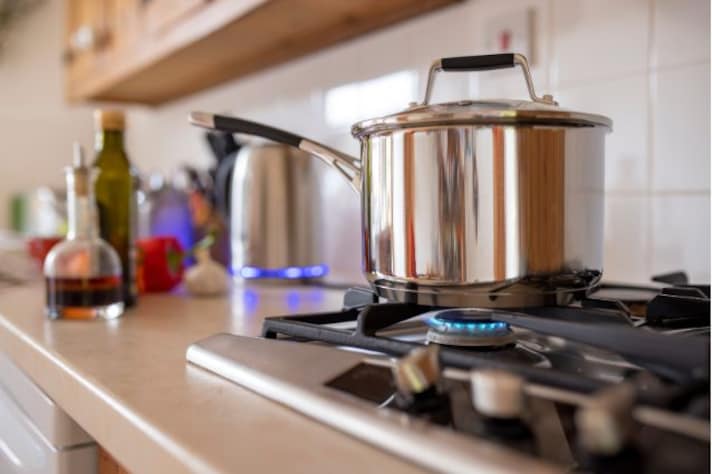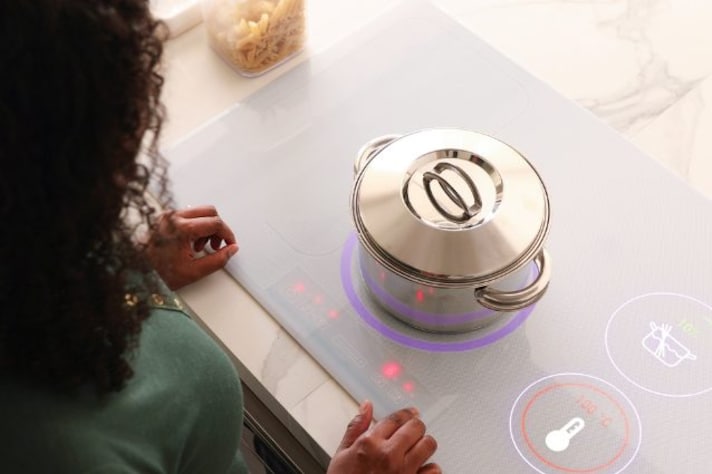What is Medium-High Heat On a Stove? How Do You Crack It On Every Stove?
Medium-high heat, a key setting for cooking tasks like browning, sautéing, and searing, sits between medium and high on the stove. On a gas stove, it’s typically a steady flame around 4–6; on an electric stove, it’s usually set between 6–7; and on an induction stove, it’s often at 6 or 7.

A kitchen just doesn’t feel complete without a stove, that cornerstone appliance where nearly all home-cooked meals begin. Whether it’s a gas stove with a flickering blue flame, an electric stovetop, or a sleek induction model, stoves are as much a part of cooking as the ingredients themselves. With a turn of the knob, we have the power to boil, simmer, sauté, and sear. Yet, as user-friendly as these appliances may seem, they present a bit of a challenge when recipes start calling for terms like “medium-high heat.” You might find yourself staring at knobs marked with confusing numbers, acronyms, or symbols, trying to decode the mysterious setting. So what exactly is medium-high heat, and why is it such a staple in cooking?
What is Medium-High Heat, and Why Does it Matter?
Medium-high heat sits between medium and high settings and serves as a versatile middle ground for cooking. It’s ideal for tasks like browning meat, sautéing vegetables, searing fish, and achieving that perfect golden crust on foods. At medium-high, food cooks quickly enough to develop deep flavors and textures without risking a charred exterior or undercooked interior. It’s also the setting you’d typically use for making pan sauces, frying, and even some stir-fries, where a controlled but intense heat is necessary. For most home cooks, mastering medium-high is essential because it’s where many foundational cooking techniques come to life—resulting in beautifully browned, flavorful dishes that cook evenly.

Medium-High Heat on Gas Stoves
Gas stoves bring the charm of visible flames, but deciphering the exact setting can be confusing when knobs are labeled with vague numbers or symbols. On most gas stoves, medium-high heat falls around 4 to 6 on a numbered dial, or just past the halfway point on a knob with a low-to-high range. If your knob uses symbols, medium-high typically aligns with a flame height that’s steady but not roaring—a gentle dance rather than a blaze. Watch for a flame size around an inch tall, strong enough to cook, yet manageable enough to avoid scorching.
Medium-High Heat on an Electric Stove
Electric stoves, often marked with numbers from 1 to 10, can make medium-high heat feel like a guessing game. Here, medium-high generally lands between settings 6 and 7. Since electric coils take a bit to heat up, it’s best to preheat for a few minutes to get the surface hot enough for a true medium-high temperature. Electric stoves may lack the visual cue of a flame, but feel for heat radiating from the burner—it should be warm enough for a sizzle without an instant burn.

What About Induction Stoves?
Induction stoves are a modern marvel, but finding the right setting for medium-high heat can be daunting. With induction, heat is generated directly in the pan, typically controlled by numbers ranging from 1 to 9. Medium-high heat is usually around a 6 or 7, just shy of the high setting. The quick, even heat of induction stoves means you’ll reach the right temperature faster, so watch for a gentle simmer or controlled sizzle to know you’re there. Unlike other stoves, induction’s magnetic heat may need less time to get to that golden medium-high.
;Resize,width=767;)



